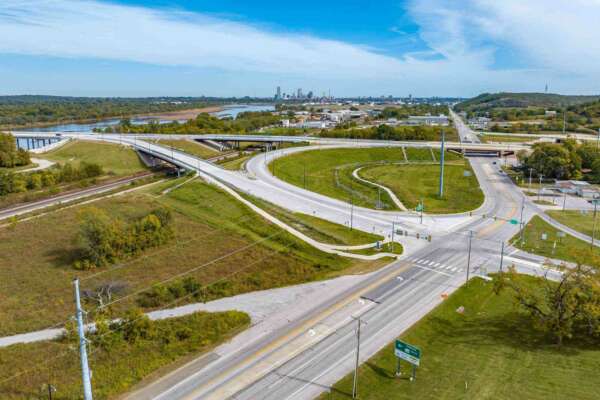The four pillars of designing infrastructure capable of withstanding the pressures of extreme storms
It isn’t economically feasible to design infrastructure that triumphs over an extreme event like Hurricane Harvey, but that doesn’t mean it isn’t possible to design for maximum resiliency.
I sometimes feel that, throughout my life, hurricanes have been chasing me. I’ve been a resident of the Houston area for over a decade now, but I went to college and lived in Mobile, Alabama for years. Back in 1997, Hurricane Danny dropped 42 inches of rain into my backyard in less than 24 hours. That wasn’t my first or last encounter with a powerful hurricane capable of producing incredible amounts of stormwater. At a younger age, I actually experienced the “eye of the storm” when Hurricane Opal passed over my family's house in September of 1995. Seeing that level of destruction drove my passion for hurricane resiliency planning. As a stormwater engineer in Mobile, I witnessed many storms such as Ivan, Dennis, and Katrina - all hurricanes that delivered heavy rainfall, storm surge, and destruction.
It was something to witness those storms in person, but as a stormwater engineer designing in a region impacted by these storms - in the immediate aftermath and years that followed - I had the opportunity to delve into post disaster evaluation and the development of resilient design, and then to see the application of that design and its success.
I took that knowledge and experience to Texas. Only a few years passed before another hurricane caught up with me. In 2017, Harvey hit Houston. It was catastrophic and unprecedented and changed our perception of what type of storms we could see in the future.
Like many others in the City of Houston and Harris County since then, I’ve been thinking about how to answer this question: How can we design our infrastructure projects for maximum benefit, cost effectiveness, and most importantly resiliency - for the ability to withstand the pressures of future storms and events, the size of which we cannot yet imagine?
The answer? It’s not easy. There’s no silver bullet. But there are ways to create infrastructure that functions for most major storm events and that survives extreme storms, remaining structurally sound and stable in the face of events we cannot plan for. How? My experience has led me to these four pillars of designing for resiliency.
Pillar 1: Take a system-whole approach to resiliency methods and design
Taking a system-whole approach means systematically assessing and thinking through various techniques and then effectively applying them. For example, up-sizing pipes, increasing channel capacity, increasing retention and detention volume, while taking environmental aspects into consideration. When we up-size pipes, perhaps we’ve designed for a 100-year event, but we’ve provided capacity for a 500-year event. We know that the pipes can act as a retention structure when a large event occurs, holding more water than they were intended to convey.
You can apply this idea to channel capacity as well. Depending on the particular drainage aspects of the area, you might design channel capacity for 50 to 100-year events, but size it for a 500-year event to provide added detention volume. Increased channel capacity helps move floodwaters away from flood prone areas quickly and prevent those floodwaters from overtopping the channels.
And when you’ve designed for that increased channel capacity, you’ve got to plan to properly maintain that channel. A significant uptake of non-treatment type vegetation can cause a channel to lose capacity. Properly vegetated channels provide a treatment element and help maintain the channel’s integrity. Under the stress of an extreme rain event, wetlands vegetation is at risk of being uprooted and pushed out. So, regularly reestablishing environmental wetland features with hardy vegetation that will resist being easily washed out is essential.
When the water overflows, as it inevitably will in the event of a Harvey-sized storm, it’s crucial that the channel’s banks have been designed to the right slope to give protection to the channel. Side banks and slopes should be carefully considered and provided with the protection of rock or gabion baskets in areas that are more susceptible to sheer forces when the water is flowing hard.
Retention ponds, designed for resiliency, should incorporate inflow and outflow protection with an overflow type weir that's structurally solid. And they should be able to be drained prior to an event to maximize capacity. So, when a large storm event happens and the retention pond is overflowing, that point of overflow is controlled protecting downstream areas to the extent as possible.
Thinking about what’s upstream and downstream and designing accordingly applies to bridges as well. Design should protect bridge piles and bases from scour as much as possible, whether by making piles bigger, deeper, adding extra footing, or through the placement of structures upstream and downstream to control the water’s velocity through that bridge.
Essentially, culverts, pipes, channels, and retention and detention ponds should be designed to sustain failure from a hydraulic capacity perspective and remain structurally sound - capable of functioning in events potentially occurring soon after. This allows us to design for stability, mitigating further damage and keeping the infrastructure that’s in place, in place. When the extreme weather arrives, as we know it will, the infrastructure will remain structurally sound. And after the waters recede, that structure is still functioning and doesn’t require much repair or replacement, even though it has just faced an event that, from a capacity standpoint, it couldn’t handle.
Pillar 2: Cultivate deep knowledge of the area
Deep knowledge of the geographical area is vital. While we have computer models created with modern 2D and 3D technology based on LiDAR, and here in Houston have new MAAPNext FEMA floodplain models, those models and maps - as good as they are - cannot provide a comprehensive view of specific local flood conditions. Local knowledge, coupled with new models and maps, is necessary for comprehensive understanding. FEMA’S coastal maps and studies are a great
beginning point and provide a complete understanding of the backwater
conditions driven by coastal surge.
Then you have to know the rainfall depth and distribution. Since Harvey, NOAA Atlas 14 has provided a new rainfall distribution curve for the state of Texas, increasing predictions for the 100-year event in many regions - some by as much as several inches in a 24-hour period.
Pillar 3: Use predictive technology to be as proactive as possible
The technology to evaluate the intensity of major storms in a predictive manner is available. Being able to coordinate the stormwater management system and proactively plan for the events is a huge asset. When possible, infrastructure should be designed to allow you to make operational system changes during a significant event. When our predictive technologies alert us to a coming storm, for example, lowering water levels in regional detention ponds in advance can help maximize the volume you have in your system. Flow diversions, when possible, should be utilized. Maximizing detention pond volume and creating flow diversion to move stormwater from one outfall location to another can benefit system resiliency.
Pillar 4: Involve the community
In Houston and Harris County, flooding is everyone’s problem. The community should be seen as a major stakeholder and heavily involved in the process of designing for resiliency and planning to increase resiliency at the community level.
Holding public outreach workshops accomplishes two important goals: 1) they help educate the public about how to become more flood resilient and about the importance of having a flood emergency plan, and 2) they allow us engineers to hear from the public, gleaning important details about the flooding the public has experienced, such as where and how high the water was. This helps us calibrate our hydraulic models.
Designing for resiliency is possible, practical, and responsible
We know we can’t prevent another Harvey, or build infrastructure to mitigate a Harvey-sized scale. But this doesn’t mean we can’t successfully design for resiliency. When we do, we design infrastructure that delivers maximal benefits for our everyday conditions, we ensure the survival of our infrastructure and mitigate damage, and this makes the system (that lasts and requires less repair) as cost effective as it can be. And what’s more, and most important, we give our communities the absolute best to be prepared and safe during an extreme event.









Share this article